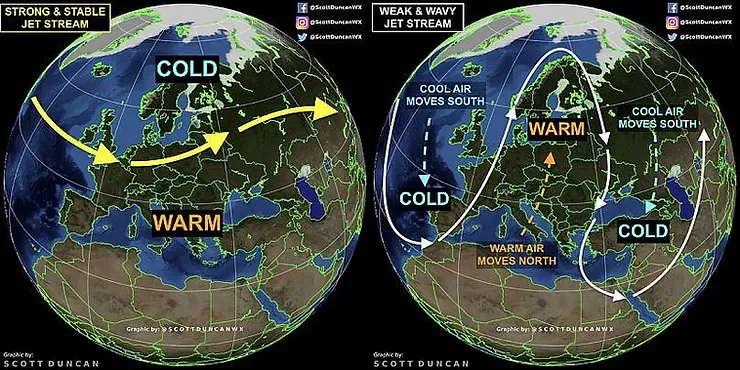By: Emily Chu
As heat waves break across Europe, temperatures have been at an all-time high. On Sunday, it reached 93 degrees Fahrenheit in Paris, 20 degrees higher than the average July temperature there. Italy’s Tiber River has dried up, while wildfires continue to burn in Greece and Spain.
The U.S. government blames global warming for the heat waves, and it indeed is one of the causes of rising temperatures. Carbon dioxide and other greenhouse gases, such as methane, nitrous oxide, and CFCs, absorb and re-emit radiation toward the earth, trapping heat inside the atmosphere.
However, a much bigger factor is atmospheric circulation. A region of upper-level low-pressure air near the coast of Portugal has contributed to high temperatures in England and Wales.
Low pressure zones tend to cause extreme heat. As air moves from high to low pressure, the low-pressure zone in Portugal has drawn air from North America to Europe.
“It’s pumping hot air northward,” said Kai Kornhuber, a researcher at Columbia University.
Changes in the jet stream has also contributed to the heat waves. The jet stream, a high-altitude, fast-moving wind current, is essential to the flow of air. The jet stream is made up of two halves, and the area between those currents has a low air flow. This means that hot, high-pressure air tends to build up there.
“It seems this is really favoring the buildup of this heat wave,” said Efi Rousi, a scientist at Potsdam Institute for Climate Research.
After a heat wave occurs in one place, it is more likely to happen in that same location again. The period of extreme heat causes land to dry up, meaning it can take in less heat. The water stored in the ground is a high heat capacitator and is essential to maintain and regulate temperature.
Sources:
https://www.nytimes.com/2022/07/19/climate/europe-heat-wave-science.html
https://www.cbsnews.com/news/heat-wave-europe-italy-drought-wildfires-france-spain-greece/











